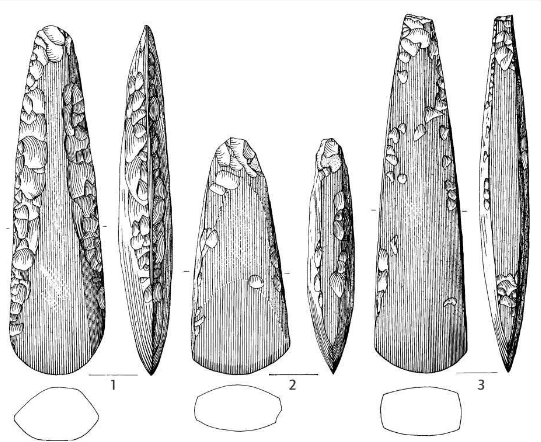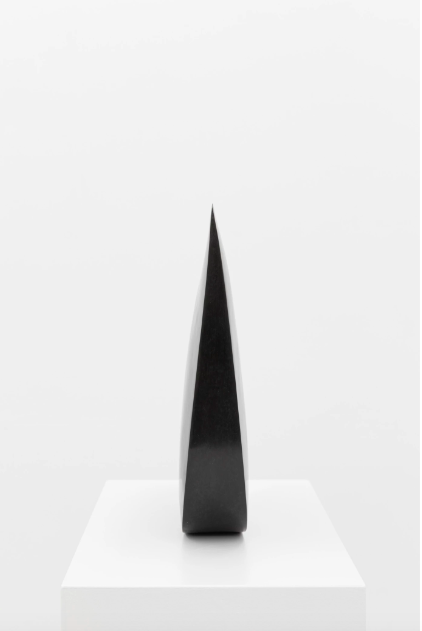Echo(es) of the past(s) in contemporary experience(s)
Illustration: Lykke Johansen. After P.V. Petersen 1993
There exists an ambiguous dimension to the phenomenon of an echo, one that can sometimes find its expression when we immerse ourselves in the realms of art. Here, echoes can unfold as not mere repetitions, but as echoes of emotions, stories, and experiences that reverberate across temporal, spatial and emotional dimensions. It was these echoes that drew me into Marie Buskov's exhibition, Folded Fields of Time, where one particular sculpture, Kilen, captured my attention.
The phenomenon of an echo, resonating through both time and space, has long captivated the human imagination. In the physical world, echoes are reflections of sound waves off surfaces, which creates both fragmented and distorted sounds after the original source has ceased. Thus, experiencing an echo highlights the notion that our experience of reality is often fragmented and distorted.
Fragmentation and distortion of something which once was, is something I experience and think about quite frequently. Because archaeology, my subject of study, by its nature unfolds as a discipline marked by fragmentation and distortion.[i] Furthermore, experiencing an echo also highlights the notion that we often must rely on interpretation to discern the essence of the sound. It is also through the lens of interpretive inquiry that we engage with the fragments of the past, to unravel its meanings and narratives.[ii]
These echoes are, for me at least, ambiguous, and elusive. They are not bound by the constraints of time and space. Rather than concrete entities, they constitute an emotional realm one can enter when confronted with certain facets of history.[iii] In my perspective, the fragmented nature of the past, particularly in an archaeological context, can influence our present experiences, imbuing them with an atmospheric, ambiguous, emotional, and sometimes even uncanny quality.
I remain hesitant about subscribing to the idea of echoes from a great distant past or to the notion of a universally shared human experience transcending time and space. Instead, I acknowledge the idea that certain objects possess a unique capacity to awaken interpretational echoes within the observer — a phenomenon that defies easy categorization.
While the concept of echoes from the past may appear abstract, a personal experience of this phenomenon may offer a slightly more tangible perspective. During my first weeks in Oslo, as part of the introduction meeting for Paragone, I visited Galleri Riis, which happened to host the Folded Fields of Time exhibition by the artist Marie Buskov.
In her exhibition, Buskov confronts the observer with sculptures in cast aluminum and bronze, a stained-glass painting, ceramic objects, murals and works on paper. To me, Buskov's work is notably marked by her exploration of the relationship between time and space, as well as the dynamic interplay between space and form, both familiar and unfamiliar. What transpires within the spaces that emerge between various entities and materials? To me, these spaces are not emptiness but rather an open invitation to impose them with meanings, all while confronting and engaging with the existing elements that inhabit them.
Marie Buskov, Kilen / Photo: Adrian Bugge
The bronze sculpture featured in the exhibition, titled Kilen, is of significance within this context. What made this sculpture stand out to me, is not just its material composition — meticulously crafted from bronze and patinated to replicate the texture and appearance of stone — but also the echoes it conjures, in both its form and in its material properties. As I engaged with this sculpture, a sudden rush of familiarity washed over me. I noticed that the sculpture's shape bore a striking resemblance to something that was familiar to me — the polished Neolithic flint axes that I had encountered in my archaeology studies.
However, when I faced the sculpture from a different angle, it underwent a transformation, adopting a shape seemingly unfamiliar to me. The sculpture I had grown acquainted with seemed to dissolve. This shift in perception evoked a sense of estrangement. The sculpture, which had momentarily transported me to a different time and place, now felt detached, as if it belonged to an entirely different artistic realm. The echoes of the past that had reverberated within me moments ago were replaced by a sense of, what I can only describe as, dissonance, reminding me that the experience of art, much like our understanding of history, can be as fluid and dynamic as the perspectives we bring to it.
Furthermore, the transformation of bronze into what appears to be aged stone, as I experienced it, resembles a temporal fold. Because this combination of materials not only invokes a sense of temporal malleability, but also reminded me that history and time is not a linear progression but a complex interweaving of narratives, where materials and technologies persist alongside one another, sometimes defying traditional categorizations.[iv]
I like to think that the echoes I sensed when I encountered Kilen are not mere abstractions; instead, I think they manifest as experiences that bridge the time between the past and the present. The encounter with the sculpture was a moment of introspection, a reminder that the past is not a fixed point but always shifting, depending on the perspective from which we approach it, and that our connection to it (the past) is as complex and multifaceted as the sculpture itself. They do not necessarily provide clarity about the past, but rather, they evoke emotions and sensations, inviting us to create meanings in both the past and the present.
Literature
[i] Pétursdóttir, Þóra. “Small Things Forgotten Now Included, or What Else Do Things Deserve?” International Journal of Historical Archaeology 16, no. 3 (September 2012): 577-603.
[ii] Tilley, Christopher. 1993. “Introduction: Interpretation and a Poetics of the Past.” In Interpretative Archaeologies. Edited by C. Tilley, 1-27. Oxford: Berg.
[iii] Sørensen, T. F. 2015. “More than a feeling: Towards an archaeology of atmosphere.” Emotion, Space and Society 15 (May 2015): 64-73.
[iv] Gebauer A. B., Sørensen L., and Taube M. “First Metallurgy in Northern Europe: An Early Neolithic Crucible and a Possible Tuyère from Lønt, Denmark.” European Journal of Archaeology 24, no. 1 (2021): 27-47.



